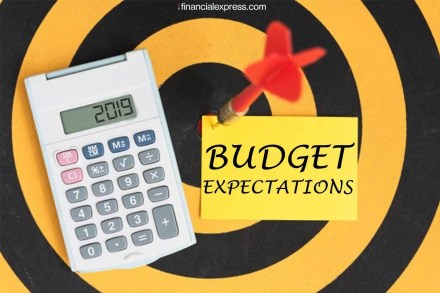Budget 2019 India: Middle class is that strata of our economy which has limited income and huge tax burden. Their income is taxed at the higher rate of 20% instead of the lowest rate of 5%. They get their salary after all the tax deduction and cannot claim any deduction for the expenses they incur to do their jobs properly. The government is expected to find a mid-way for the middle class in the Budget 2019.
Education expenses
The Income Tax Act provides benefits in the form of deduction of expenses to those carrying on business and profession. However, the salaried class pays taxes on gross salary only. Further, the standard deduction of Rs 50,000 does not provide any sizable relief as the same is counterpoised by the removal of transport allowance and medical allowance. This incongruity must be removed to bring consistency between the salaried employees and business persons. Also, a fixed standard deduction for all the levels of salaries class is unfair, the same should increase with increase in the level of income.
An individual below 60 years of age earning between Rs 2.5 lakh and up to Rs 5 lakh is required to pay tax at the rate of 5%. A taxpayer earning income between Rs 5 to 10 lakh has to pay tax at the rate of 20%. The jump from 5 to 20% for income above Rs 5 lakh needs to be rationalised.
Further, unlike the businesspersons, the middle class salaried individuals are paid after deduction of tax at source every month. In addition, tax efficient saving options like section 80C also come with a ceiling limit. Section 80C is primarily an investment-linked tax prospect that helps reduce an individual’s tax liability. Multiple provisions are clustered under a single section and most taxpayers are not able to reap the benefits provided by this section to their advantage.
Interest on bank deposits
Section 80TTA affords deduction of Rs 10,000 to individuals, in respect of interest on savings account with banks, post offices and cooperative banks. Whatever may be the form of deposit, money remains in the banking mesh. So, interest on all types of deposits be included within the bounds of section 80TTA.
Considering which, the present level of allowances and concessions in respect of salaried class is woefully inadequate. For instance, tax exemption for Leave Travel Concession (LTC) is currently restricted to the value incurred for travel, it should also include expenses incurred on accommodation or meals during such travel. The limit for Children Education Allowance (CEA), should be raised from Rs 100 per month to at least Rs 1,000 per month per child for maximum two children, or actual expenses, whichever is less.
While expectations are plenty, it remains to be seen what the finance minister has in her pool for the common man.
(The writer is executive director, Nangia & Co LLP. Inputs from Vasudha Arora)
